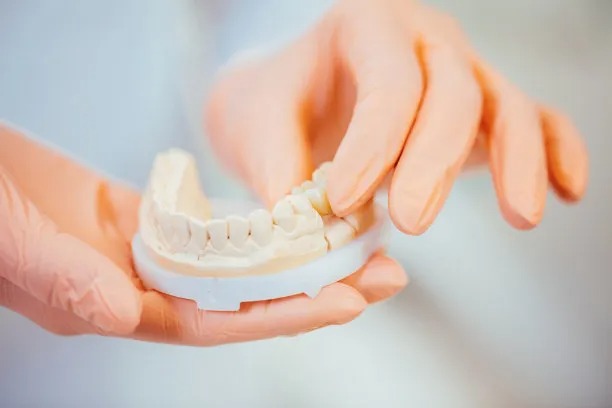The Essential Guide to Safely Extracting a Tooth and Promoting Quick Healing Afterwards
Summary: Extracting a tooth can be a daunting procedure, but with the right knowledge and preparation, it can be performed safely and with minimal discomfort. This article provides a comprehensive guide to safely extracting a tooth along with effective strategies for promoting quick healing afterward. The guide is divided into four main areas: preparation for tooth extraction, the extraction procedure itself, post-extraction care, and signs of complications. Through understanding each of these aspects, individuals can ensure a smoother experience before, during, and after the tooth extraction process. Whether its a routine procedure or one necessitated by pain, this article aims to equip readers with essential insights for a successful outcome.
1. Preparing for Tooth Extraction Safely

Before any tooth extraction, proper preparation is crucial to ensure safety and effectiveness. It begins with a comprehensive dental evaluation, which may include X-rays to assess the tooth and surrounding structures. This evaluation helps identify any underlying conditions that could complicate the procedure. Additionally, discussing medical history with the dentist is important to highlight any medications or health issues that could impact the extraction.
Another essential aspect of preparation involves understanding the type of anesthesia that will be used during the procedure. Local anesthesia is commonly employed to numb the area around the tooth, while sedation options may be available for patients experiencing anxiety. Knowing what to expect can help ease pre-procedure nerves.
Lastly, making logistical arrangements is part of the preparation phase. It’s advisable to arrange for transportation post-extraction, especially if sedation is involved, as it may impair one’s ability to drive. Planning for a few days of rest post-operation can also be beneficial for a smooth recovery.
2. The Tooth Extraction Procedure Explained
The extraction procedure itself usually takes place in a dental office, conducted by a qualified professional. Once the patient is seated comfortably, and anesthesia is administered, the dentist will use specific tools to loosen and finally remove the tooth. Depending on the tooth’s condition, it could require a simple extraction using elevators or a more complex surgical extraction for impacted teeth.
The dentist will maintain a sterile environment to minimize infection risk, employing techniques that prioritize patient safety. Continuous communication between the dentist and the patient is key during this phase, ensuring the patient is comfortable and aware of each step being taken.
It is important to note that the overall duration of the procedure is relatively short, often completed within 30 minutes to an hour. However, the dentist will take time to ensure all is well and will monitor the patient before they leave the office. After the extraction, gauze will be placed at the site to control bleeding and promote blood clot formation.
3. Essential Post-Extraction Care Tips
After the extraction, proper care is crucial for successful healing. Initially, patients should bite down on the gauze provided by the dentist for 30 to 45 minutes to help form a clot. After this time, gauze can be removed, but care should be taken not to disturb the extraction site. For the first 24 hours, avoid rinsing the mouth vigorously, as this may dislodge the clot.
Managing pain and swelling is another critical aspect of post-extraction care. Patients can use over-the-counter medications, as advised by their dentist, to alleviate discomfort. Applying an ice pack to the cheek can help reduce swelling in the first day or so following the procedure.
Staying hydrated and choosing soft foods can comfortably support the healing process. Foods such as yogurt, soups, and mashed potatoes are gentle on the extraction site. Patients should gradually return to solid foods once they feel comfortable, avoiding hard or crunchy items that may disturb healing.
4. Recognizing Signs of Post-Extraction Complications
While most tooth extractions heal smoothly, being aware of potential complications is important. One of the most common issues is dry socket, which occurs when the blood clot at the extraction site becomes dislodged or dissolves. Symptoms include increased pain, bad breath, and visible bone at the site. If these occur, its essential to contact your dentist promptly.
Other signs of complications may include excessive bleeding, swelling that worsens after a few days, or fever. These symptoms could indicate infection or other issues necessitating further medical evaluation. Active communication with the dental care team post-extraction can help address any arising problems.
Lastly, adhering to scheduled follow-up appointments ensures that any potential complications are monitored and treated as needed. Regular dental check-ups are vital for overall oral health, especially after significant procedures like tooth extractions.
In summary, safely extracting a tooth is a multi-faceted process requiring careful preparation, a skilled execution of the procedure, diligent post-operative care, and awareness of potential complications. By following the guidelines provided, patients can significantly enhance their chances for a successful extraction and quicker recovery. Always consult a dental professional when considering tooth extraction for personalized advice.
This article is compiled by Vickong Dental and the content is for reference only.



